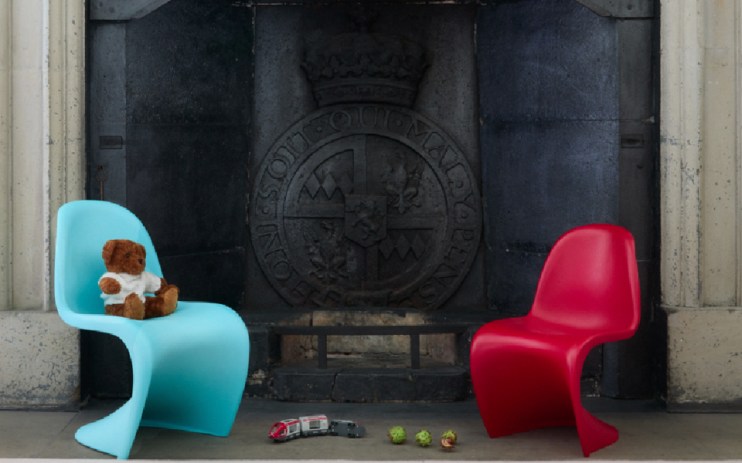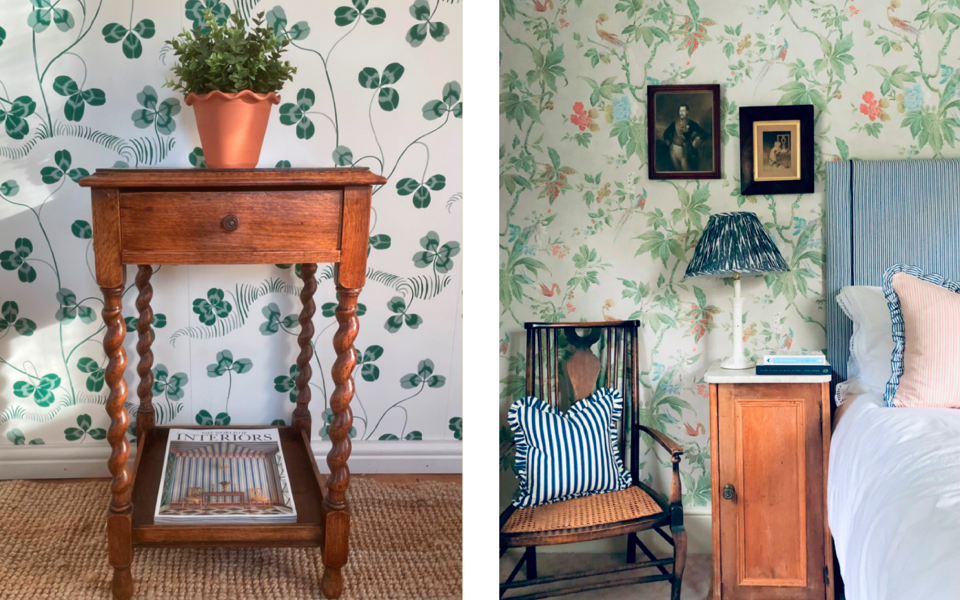How Instagram conquered the antiques world

It was a classic case of love at first sight. Over breakfast I’d spotted my ‘forever-table’ on Instagram, and by that afternoon my partner and I were en route to a residential street in Brixton to pick it up.
The caption gave some dimensions and the price; the seller’s bio read ‘shop via the grid’. So I did. She sent me her bank details by direct message, and I paid up. Soon enough, the table was mine. I had been suckered in by the homewares world’s latest disruption: shopping for furniture on Instagram, what I like to call ‘DM for details’.
Since the beginning of the pandemic, countless vintage and antiques accounts have sprung up on Instagram, selling trend-led pieces of furniture and decorative items. The process is simple. Having followed a few accounts that take your fancy, you start to scroll until something pops up. Message the seller asking for the price (if it isn’t advertised), and then swap details – their payment details, and your delivery details. Hey presto, you’ve bought a new piece of furniture, provided you beat everyone else to it.
All of this can be done from the comfort of your sofa. Some sellers sell in ‘drops’, uploading batches of stock at a time; others list as they go. Some accounts are so popular, with many thousands of followers, that it’s worth enabling notifications for when they post. Popular accounts can be inundated with messages, as Katy Takla, who uses Instagram as the sole marketing platform for her handmade cushions, knows well.
“If I have a truly one-off cushion, I’ll sell it via my Stories,” she says. “It goes bananas. If I say ‘DM me’, I have 50 messages to get back to.”
Kate Clements is also in the Instagram antiques trade. In April, she set up Bobbin Villa, a vintage sourcing business operating from her Instagram account, and her 300-year-old cottage in West Sussex. Seven months later, she has over 2,300 followers, who come for her charming pieces, usually photographed in the cottage against the pretty backdrop of her Svenskt Tenn clover-print wallpaper. Her pricing is fair; in August, she sold a three-tier side table for £145. “I want to make it available for everybody,” she says. “A lot of my buyers live in beautiful houses in London, but I also want to appeal to the average mum.
“I try to keep my prices reasonable, and that is reflected in how quickly items go.” Last week, she posted eight pieces online, all of which sold in a couple of days. Business is brisk, says Clements, who runs Bobbin Villa part time, alongside her work as a personal assistant. “If I put on eight things a week, I can make £1,500 – and I am having so much fun doing it.”
Though she has been an “interiors fanatic” since her teenage years, Clements admits that she wouldn’t have started Bobbin Villa were it not for Instagram. “You can make such an impact if a piece is styled in a particular way. People are buying into the vision of the picture I put up.”

Providing this creative vision – as well as doing all the legwork – is a gift to the Insta-browser. A lot of people, says Flora Scott, who with her husband Charlie recently launched Peartree Life, a sustainable furniture business that “keeps furniture out of landfill”, want the vision presented to them ready to buy. At Peartree, she says, “we spend a lot of time thinking about taste: should we be telling people what they want to buy, or should we be giving them the choice? A lot of people don’t want the choice – they want us to tell them.”
Most people don’t have the time, inclination or – some would say – taste to search for items, points out Jane Tarrant, co-founder of Teeny Tiny Emporium, an account selling “pre-loved, one off pieces of vintage furniture and curiosities”, which she set up with her friend, fellow former fashion editor Bryony Toogood in July 2020. “A lot of our customers don’t have the opportunity to go to the fairs that we go to – we’re curating the stuff for them.”
The majority of Teeny Tiny followers are in their late 20s to 40s; if they are anything to go by, Instagram is introducing a new demographic to the world of antiques. Olive Wakefield, founder of interiors website and mail-out PIECES, agrees. “It takes the elitism out of antiquing. I like that it feels that it’s for everyone.”
But can this new marketplace last forever? In June, freelance interiors consultant Eleanor Cording-Booth surveyed her 26,000 Instagram followers asking “if you sell homewares via Instagram… have you noticed a decline in sales since shops reopened?” More than 60 per cent said ‘yes’. Cording-Booth posted some of the comments she received in response: “As a consumer I have noticed tons of new accounts selling – the market’s more saturated,” said one, while another user replied, “I hate DM selling! [Open an] Instagram shop if you are going to sell”. Cording-Booth then asked whether her followers thought there were too many accounts selling vintage homewares on Instagram; 35 per cent agreed. Cording-Booth falls into that camp: “I’m finding it a bit overwhelming keeping track of all the new Instagram accounts selling vintage,” she wrote.
There’s some interesting psychology to get into here, points out Scott. “The lifestyle that many of these accounts promote is not only aspirational but achievable, because you can buy it just by DMing. It’s a bit more elite than just going to a website and buying something. You’ve interacted with this person whose lifestyle you aspire to have a bit of, and it’s almost as if you’re mates with them because you’ve bought something from them, and they’ve sent you a message with a kiss at the end of it.”
This kind of consumption represents another blurring of editorial and retail. “You don’t just flog a product these days, you tell a story,” adds Scott. “Instagram provides a really good medium for those stories to be told, and for those lifestyles to be developed.” There’s always a new spin on that aspirational lifestyle to be had, too. Tarrant is guaranteed to sell bedside tables: “We could literally be a shop that only sold bedsides.” But little more can be predicted, says Toogood. “People are not always as adventurous as you might like them to be.”
Still, perhaps we should be mindful of what Scott describes as the “wanton consumerism” of recent decades. “Instagram accelerates trends and augments them a bit, because it’s speedier than waiting for your copy of House & Garden,” she says. But she’s a fan nonetheless. “A lot of this stuff is really cheerful, and we’ve had a miserable time of it recently. Being able to buy a fun painted lampshade off Instagram just warms the cockles, doesn’t it?”